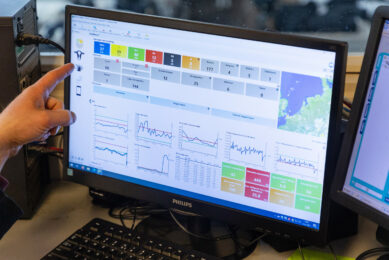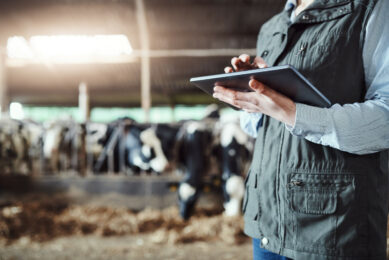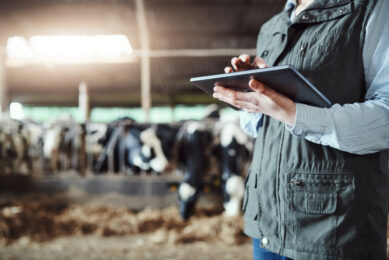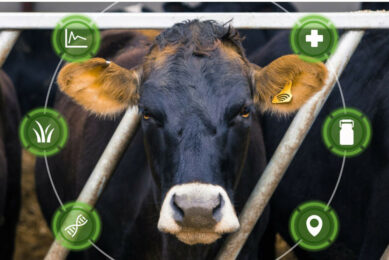Dairy farmers shouldn’t be afraid to embrace new technology
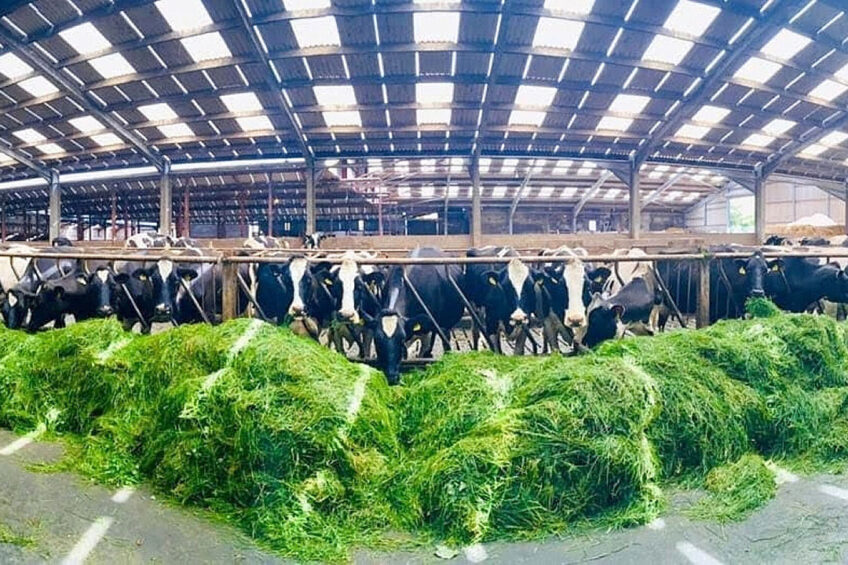
Dairy farmers should not be afraid of embracing technology if they can see a clear need for it and if the business model they have adopted can justify the cost.

While some farmers run with a ‘make do’ attitude and stick with decades old equipment others can see outside the box to relate to modern ideas and a new way of thinking.
One such farm in Northern Ireland that has adopted change and has embraced new technology over the years is Brookvale Farm just outside Dromore in County Down.

Run by Richard Lilburn, who farms with his father Thomas, mother Olive and wife Pamela, the farm comprises of 200 acres with an additional 250 acres rented for the herd of 220 pedigree Holstein dairy cows.
Maintaining a good work life balance is very important to the Lilburns who use a range of technologies to ensure they have adequate time to spend with their families.
We will continue to strive to increase our efficiency and profitability whilst giving the necessary time to the family.”
Grass is without doubt the cheapest form of feed on a dairy farm but it can work out an expensive commodity if poorly utilised. Maximising milk yields from grass is a key factor in profitable milk production on Brookvale Farm and more so now in a period of difficult milk prices.
With that in mind Richard operates a zero grazing system that can achieve dry matter yields as high as 11 tonnes of dry matter per ha (DM/ha), if worked efficiently.
 Strategies in successful transition to pasture
Strategies in successful transition to pasture
There are many dairy farmers who would like to transition their entire herd, or just their heifers, to pasture and need practical guidance on how to do it. To help, we have gathered thoughts on best practices from experts in several parts of the globe.
Most traditional grazed grass systems achieve utilised yields of around 8 tonnes DM/ha, however at a much lower cost of production compared to zero grazing given the machinery costs associated with the system.
Zero grazing can be a useful method of grassland management in the specific situation of fragmented farms. It provides flexibility in allowing the grass platform to be increased beyond walkable acres and increasing stocking density.
 How pasture access impacts cow welfare
How pasture access impacts cow welfare
Access to pasture or an alternative outdoor area is important – and scientists from Canada note that this can be an aspect of welfare that may be overlooked.
Zero grazing has been operated on Brookvale Farm for 7 years due to a fragmented grazing platform of 80 acres and family labour changes. Richard currently cuts the grass daily with a Grass Tech Pro-cut GT140 machine.
With weather being a large determinate of timing of zero grazing, on the Lilburn farm cutting usually commences each year in early April. The length of the cutting season depends largely on grass growth and weather but usually the zero grazer is parked up in October.
Richard said: “In 2019 we decided to change our feeding system and fed TMR the whole year round. However, I found this system costly and reverted back to the zero grazer for this current season.
“Grass makes up a proportion of the diet as early as possible in spring and in a typical year 100% grass diet is fed from late April onwards. The current intakes of the herd stand at over 16 kgs DM per cow per day of zero grazed grass,” he said.

Robotic milking
Just last year Richard decided to further invest in technology and installed 4 Fullwood Merlin robots to help free up some time to spend with the family.
Cows are divided into 2 houses with 2 robots and 114 cubicles measuring 2.43m x 1.22m in each house. The cubicles are a cow-coon hybrid which offers the animals comfort with pasture mats and are bedded with a peat and lime mix.
Within each of the 2 sheds cows can travel anywhere in the building unimpeded and have free access to feeding, resting and milking at all times. The system alone drives cow flow, with visits to the robots for milking averaging around 3 visits per day.
The cows are also foot bathed daily through the robot with 4 automatic baths. Dermatitis incidences have dropped considerably since the cows go through the footbath more regularly with the solution changed every 75 cows.
Production in the Brookvale herd is currently averaging 33 litres of milk per cow per day at 4% butterfat and 3.55% protein.
The diet fed ration is formulated to support 28 litres with cows eating on average 4 kgs concentrates and the maximum being fed through the robot at 12 kgs of concentrates.
Richard said: “Rather than reducing overall labour input the aim of going down the robotic route was to be more flexible with time for family life and not being curtailed by milking times.”

However, the use of technology on this farm does not stop there as Richard also uses a slurry aeration system (automatic slurry blubber system, ASBS) which is an energy efficient method to ensure standard consistency and improved quality in stored slurry.
Air is circulated through valves which are fixed to the base of the tank so this air introduction encourages continuous agitation of the slurry meaning it is in spreadable condition at all times without the need to mechanically mix.
Also, a computerised heat detection system is used for the cows where each animal is fitted with a collar that monitors heat expression and transmits the data wirelessly to a computer or a smart device. Once heats are recorded then the animal can be served.
An automatic Holm and Laue calf feeder is used to feed the young stock for 65 days from the age of one week. As much as this piece of technology has been important for 15 years now, Richard says that having his mother rearing the calves is vital on Brookvale Farm with attention to detail no less essential than the automatic system.
“Technology is always at the forefront here at Brookvale Farm,” said Richard. “We will continue to strive to increase our efficiency and profitability whilst giving the necessary time to the family.”



